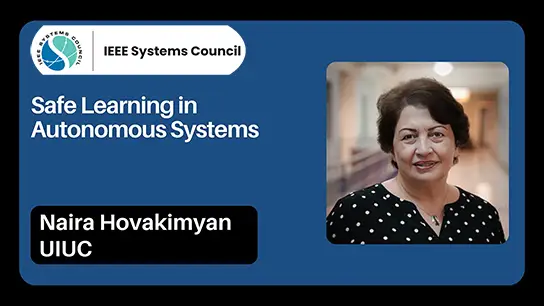Plenary: 20 Years of Designing Multi-Objective Evolutionary Algorithms: Lessons Learned and Challenges Lying Ahead
Carlos Coello Coello
-
Members: FreeCIS
IEEE Members: Free
Non-members: FreeLength: 00:45:14
21 Jul 2020
In this talk, a summary of the main research findings
produced by my research group in Mexico along 20 years
of work will be provided in a chronological order.
The focus of the talk will be on the inception process
of our major achievements (e.g., the first micro-genetic
algorithm for multi-objective optimization, the first
Pareto-based multi-objective artificial immune system,
one of the earliest multi-objective particle swarm
optimizers, the first multi-objective evolutionary
algorithm designed for large scale multi-objective
optimization, the proposal of the Inverted Generational
Distance Indicator and our findings about the
true source of difficulty in many-objective optimization).
Additionally, the lessons learned from some of our
major failures will also be discussed (e.g., our
failed attempts to design a highly competitive
multi-objective cultural algorithm or to produce a
multi-objective evolutionary algorithm based on the
Normal Boundary Intersection approach).
In the last part of the talk, some of the challenges
that we currently face in evolutionary multi-objective
optimization will be briefly discussed.
produced by my research group in Mexico along 20 years
of work will be provided in a chronological order.
The focus of the talk will be on the inception process
of our major achievements (e.g., the first micro-genetic
algorithm for multi-objective optimization, the first
Pareto-based multi-objective artificial immune system,
one of the earliest multi-objective particle swarm
optimizers, the first multi-objective evolutionary
algorithm designed for large scale multi-objective
optimization, the proposal of the Inverted Generational
Distance Indicator and our findings about the
true source of difficulty in many-objective optimization).
Additionally, the lessons learned from some of our
major failures will also be discussed (e.g., our
failed attempts to design a highly competitive
multi-objective cultural algorithm or to produce a
multi-objective evolutionary algorithm based on the
Normal Boundary Intersection approach).
In the last part of the talk, some of the challenges
that we currently face in evolutionary multi-objective
optimization will be briefly discussed.


